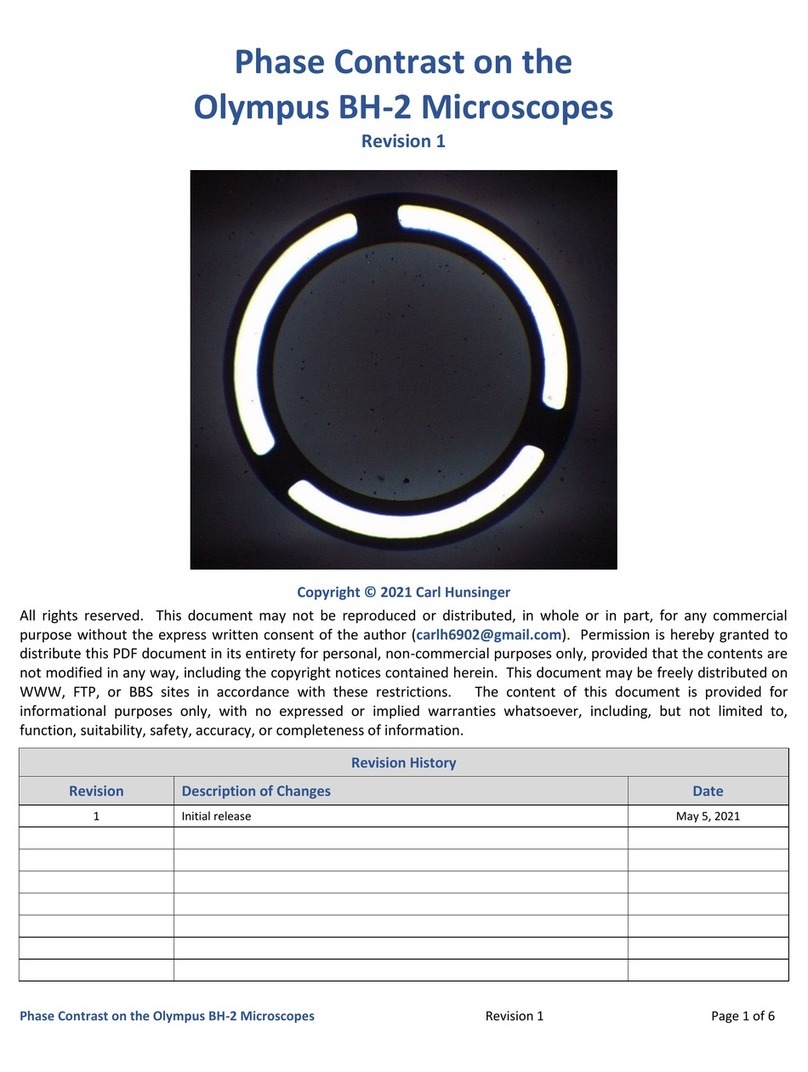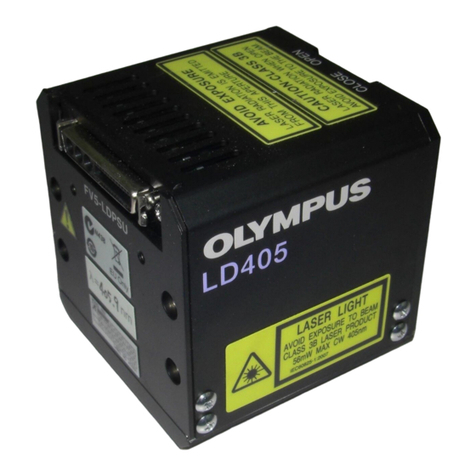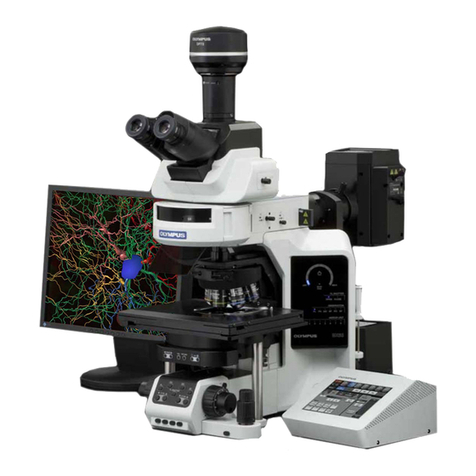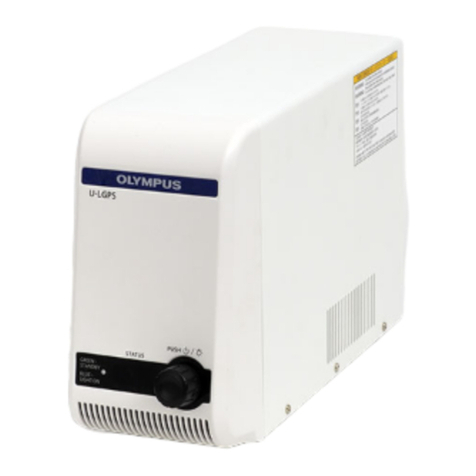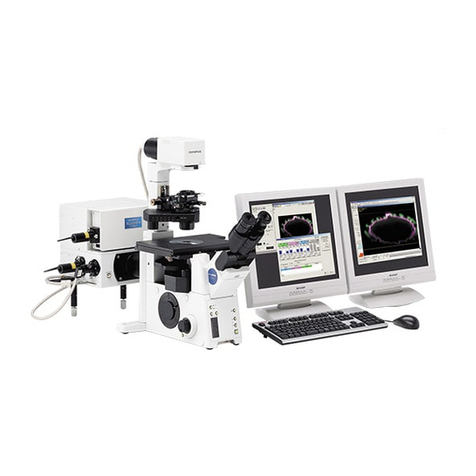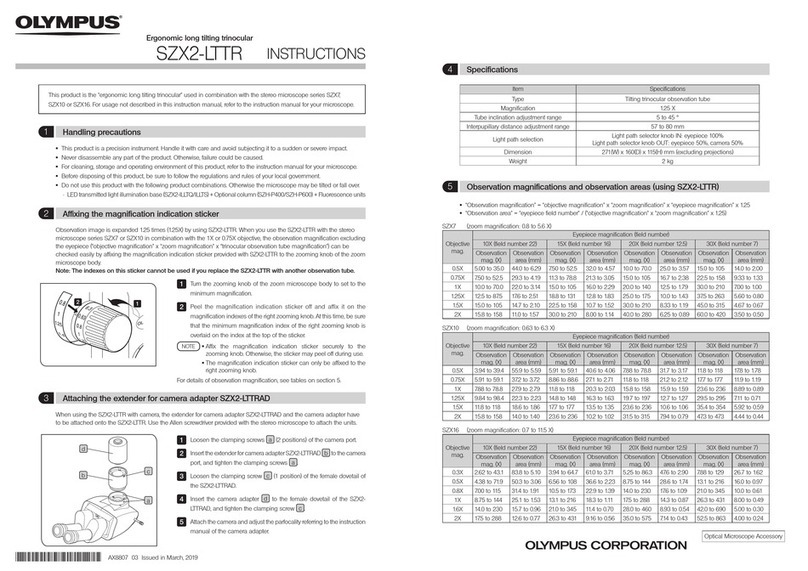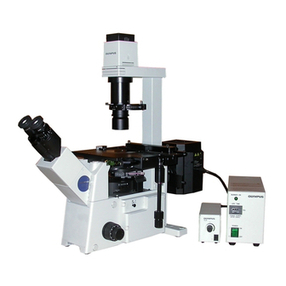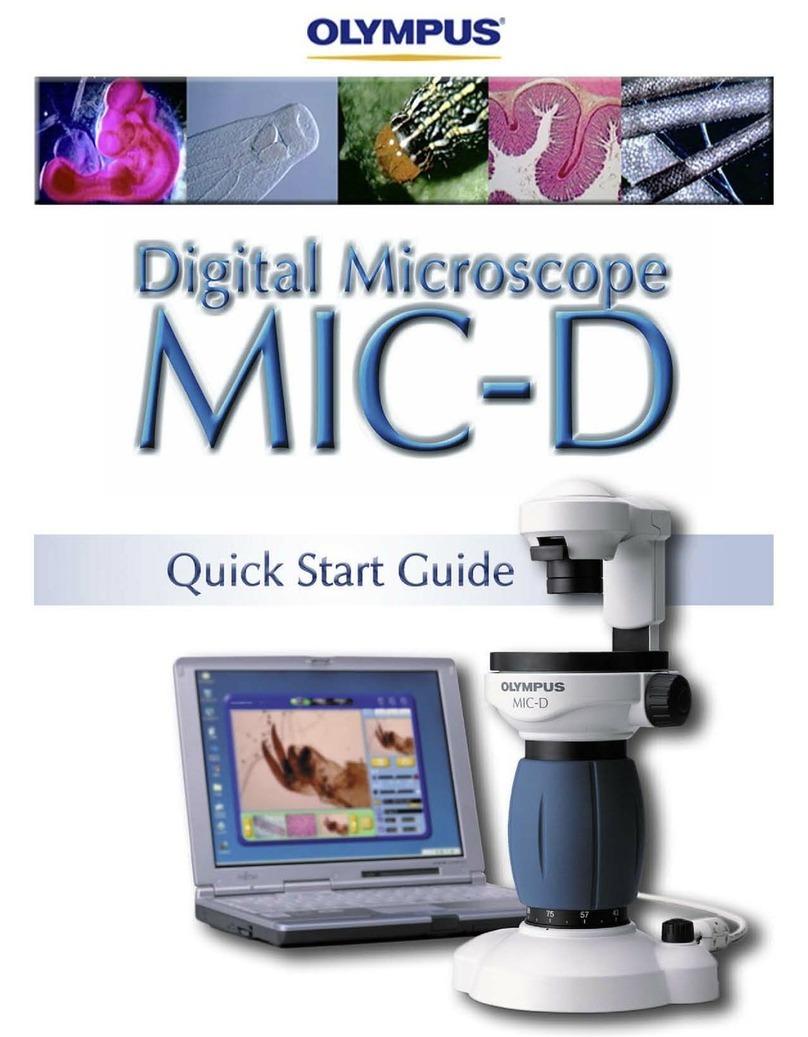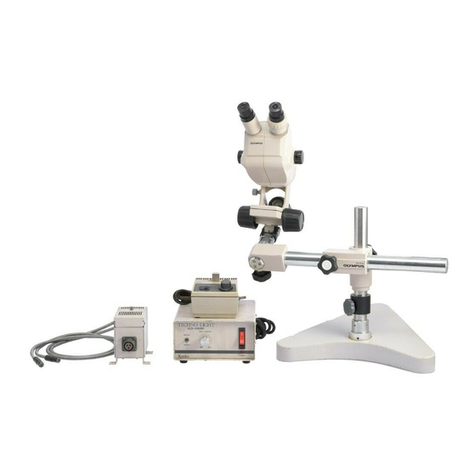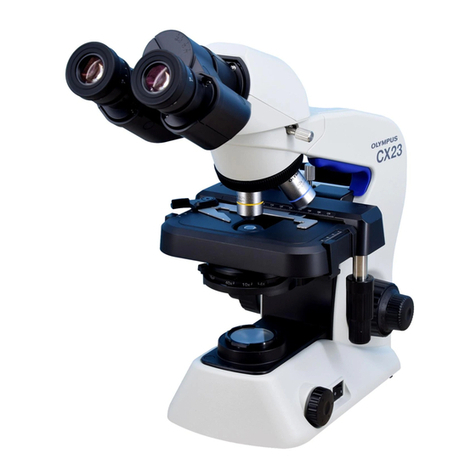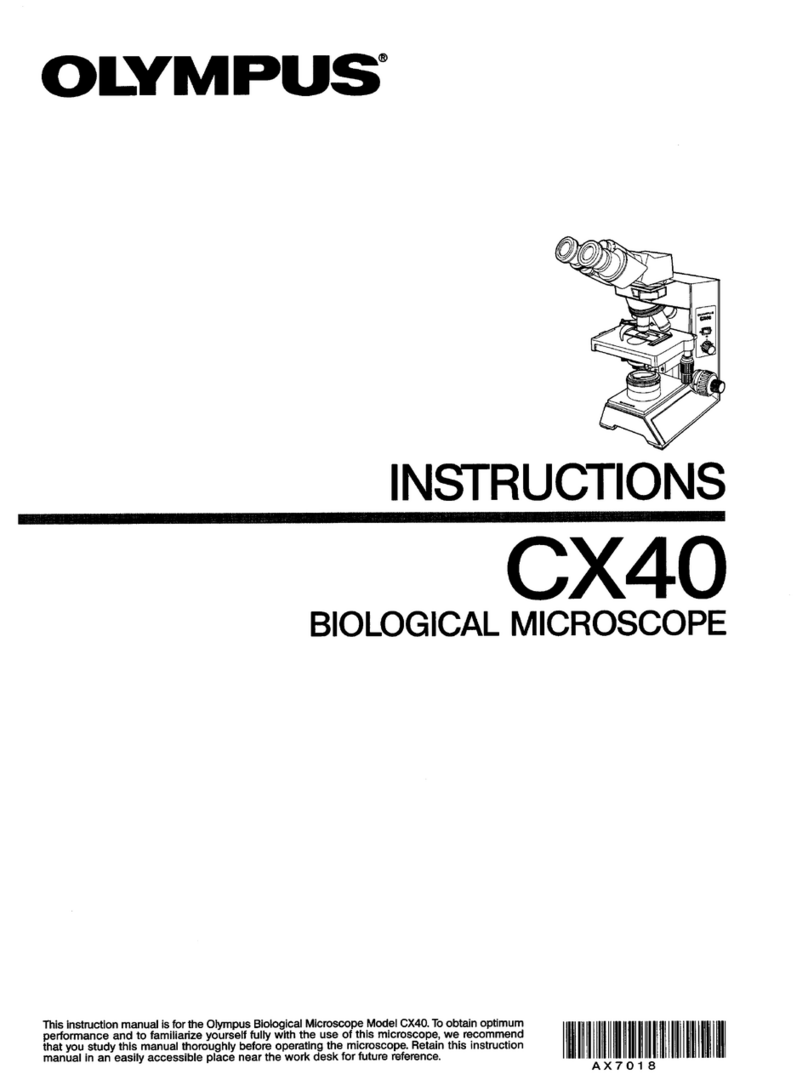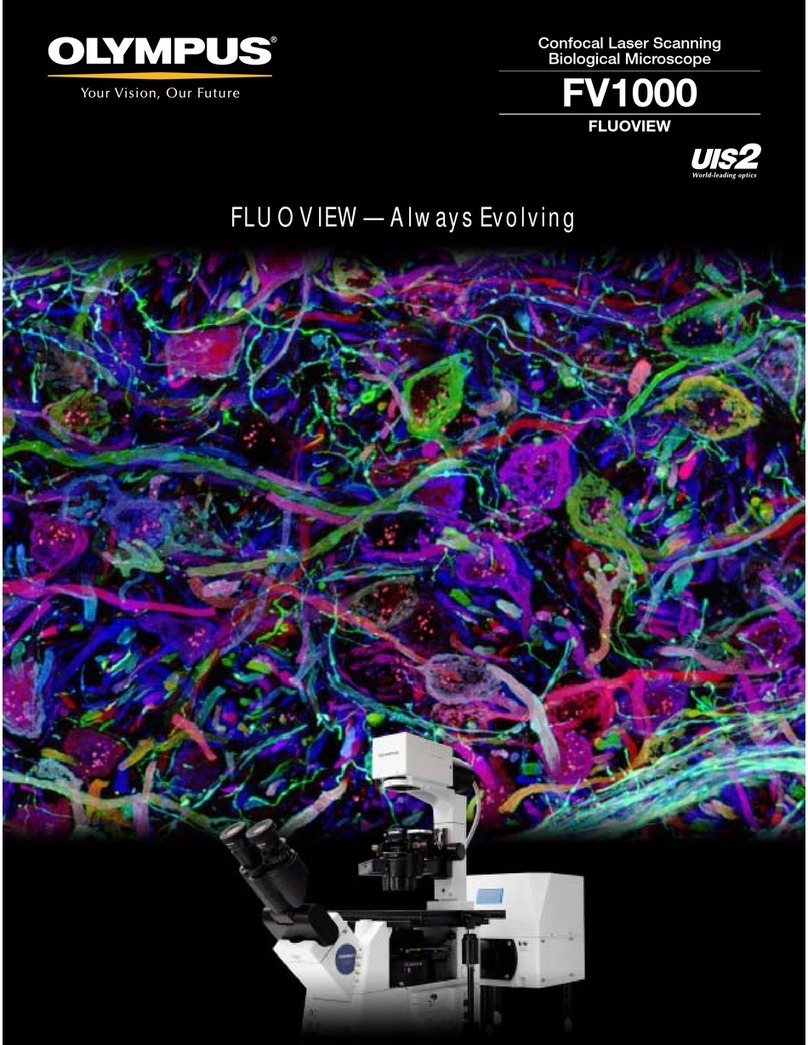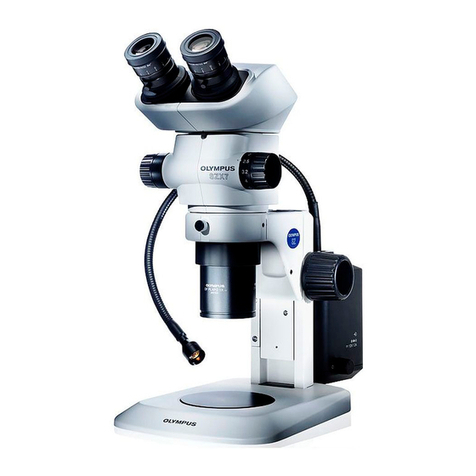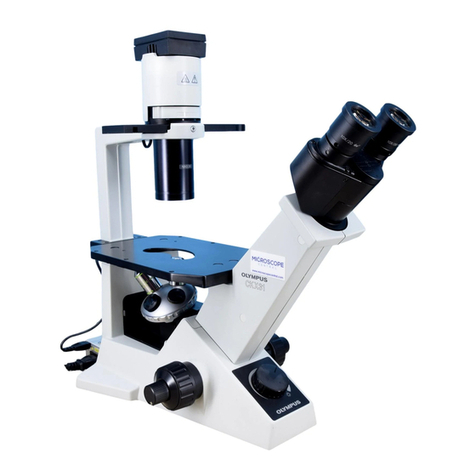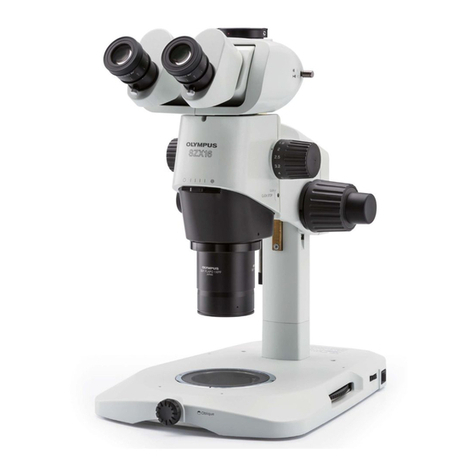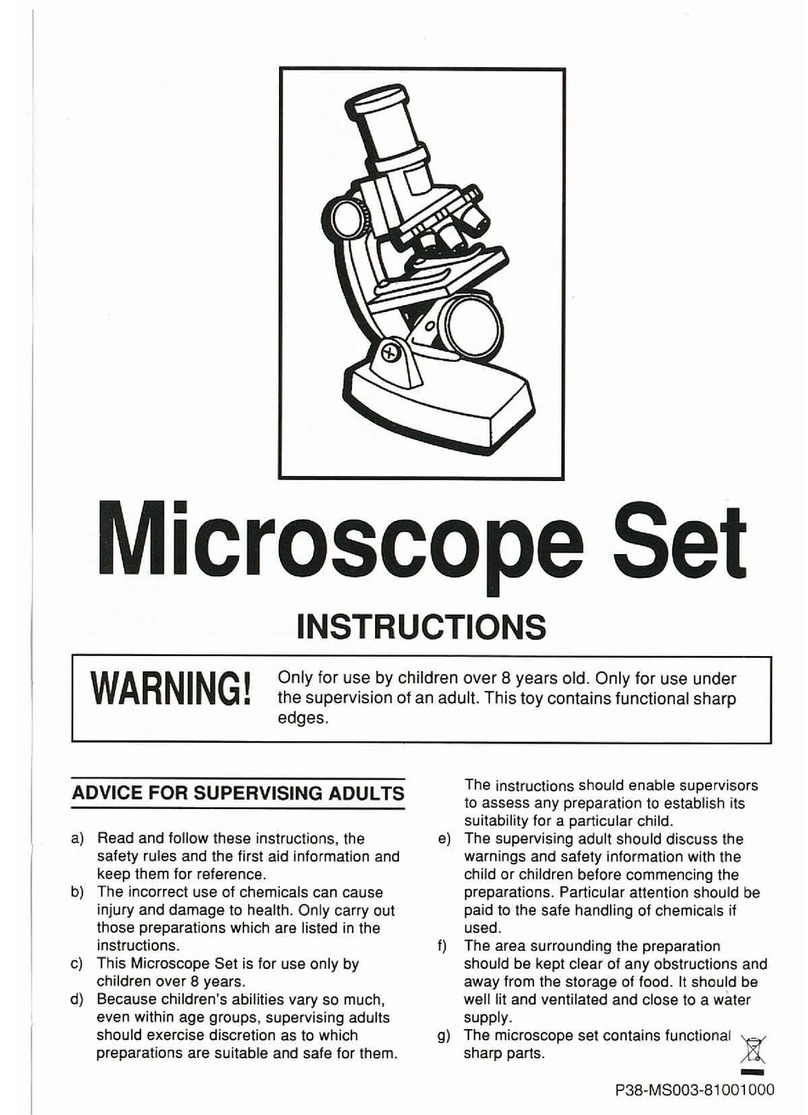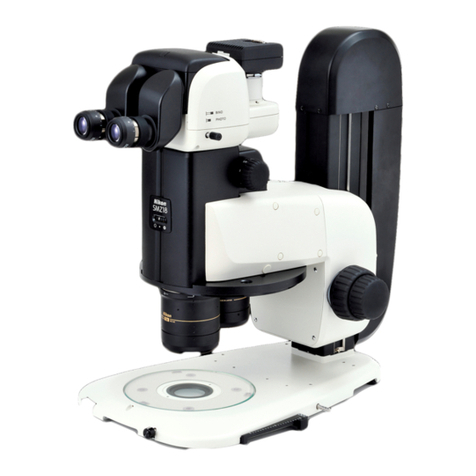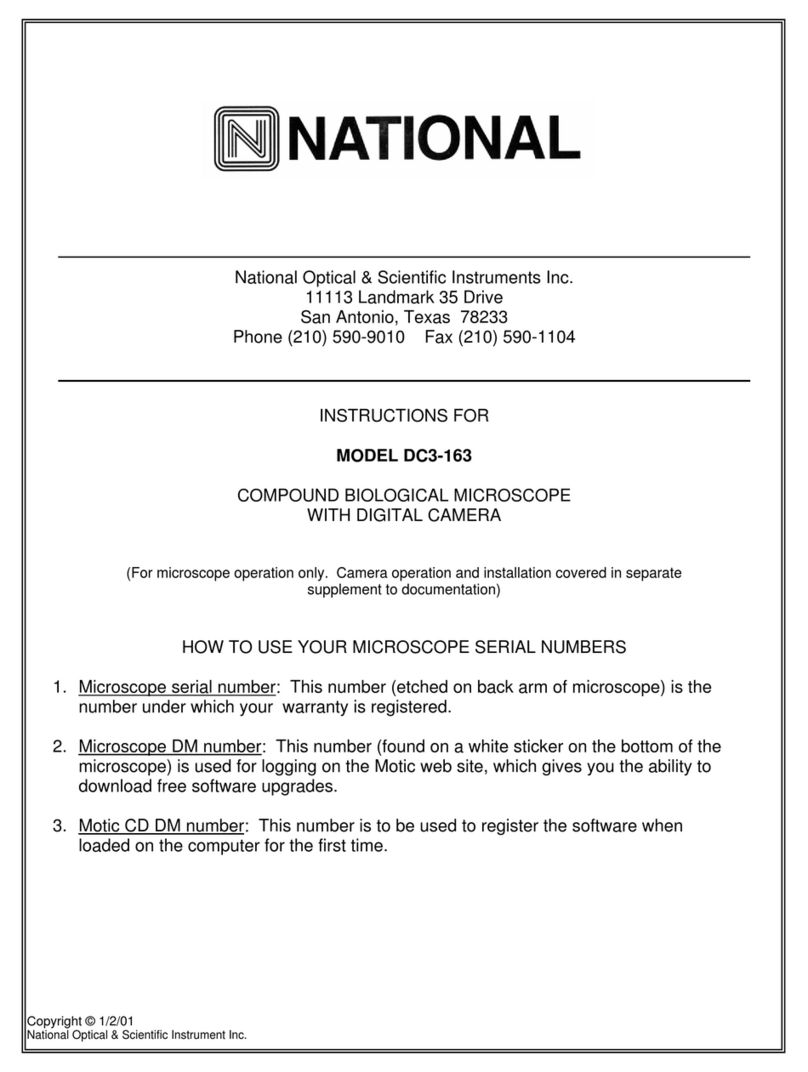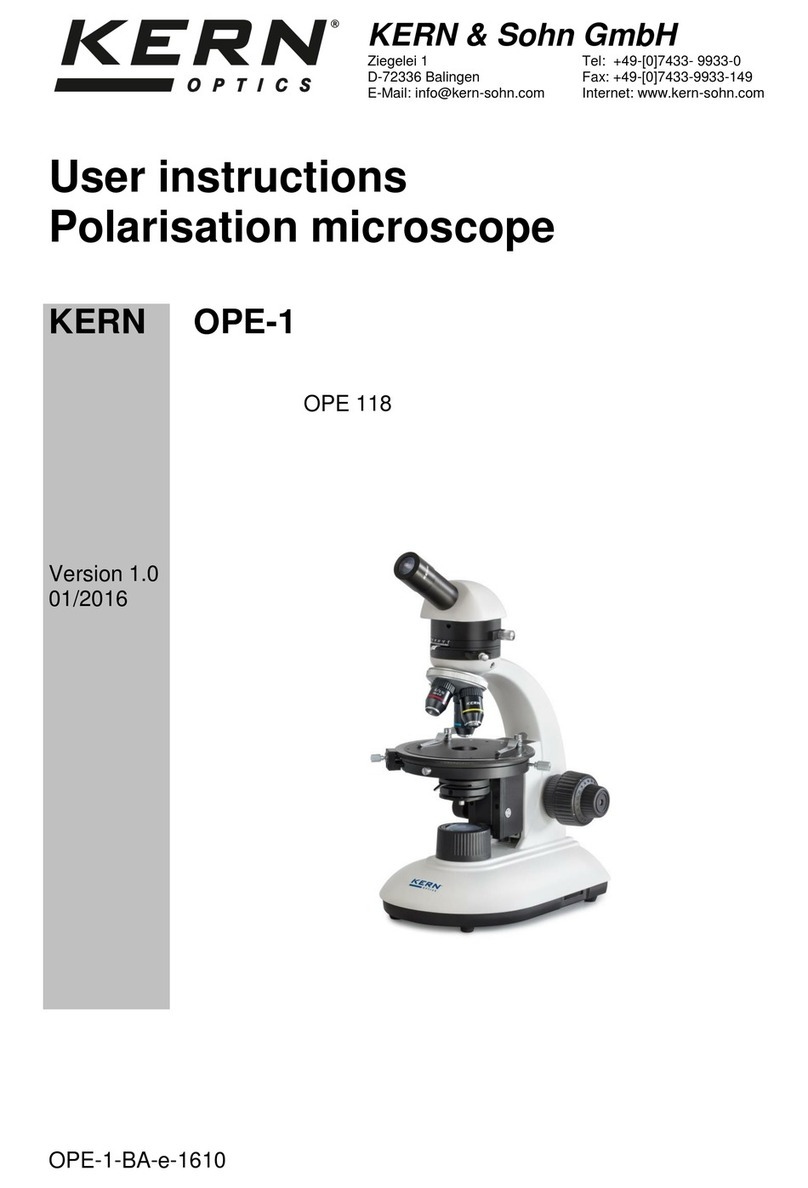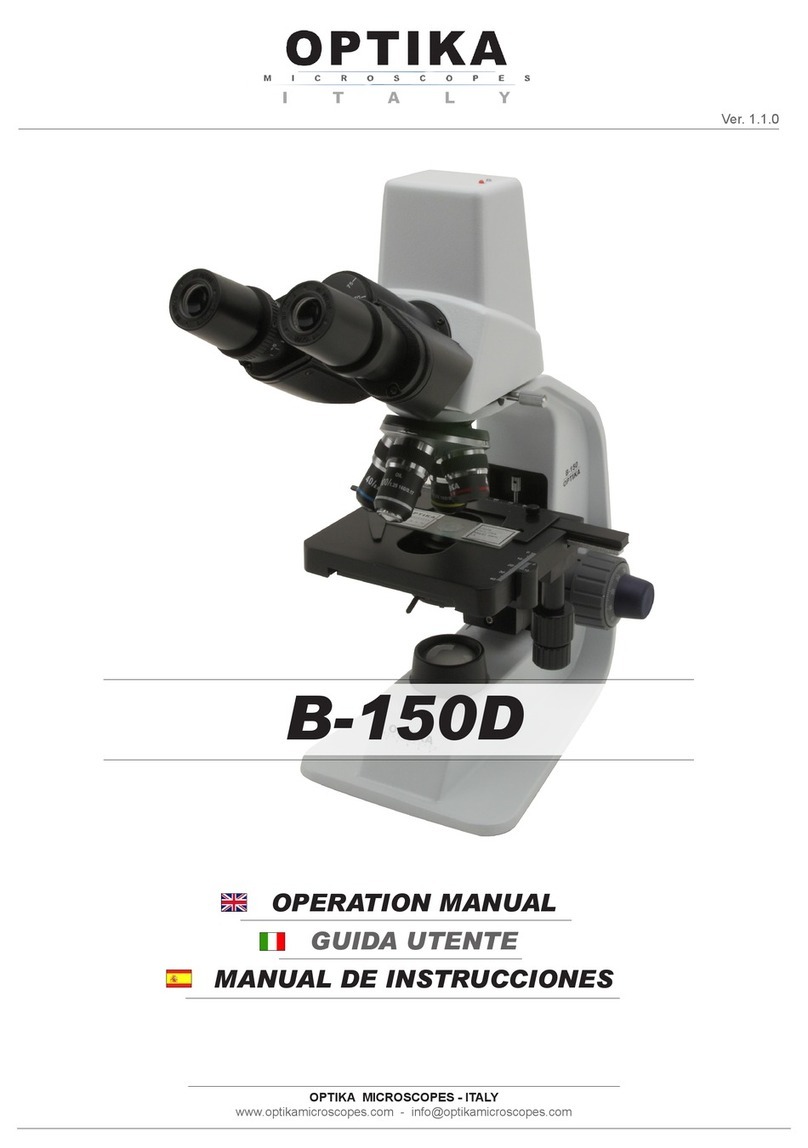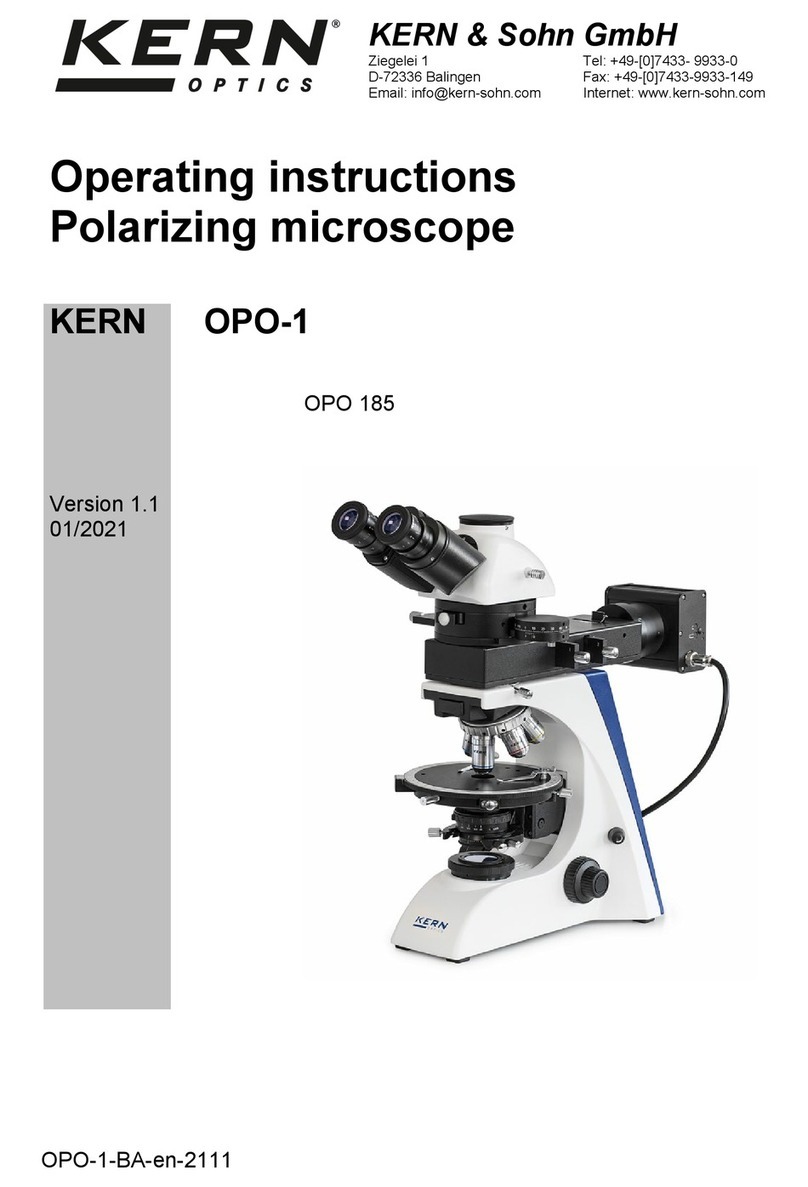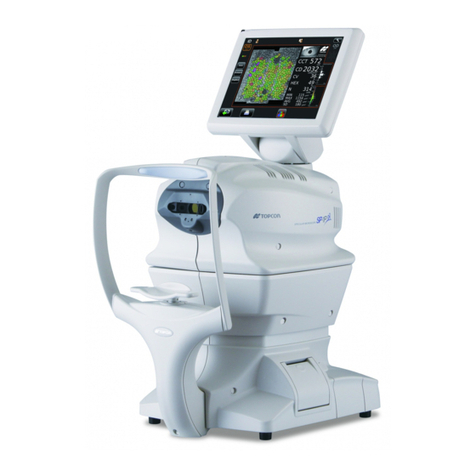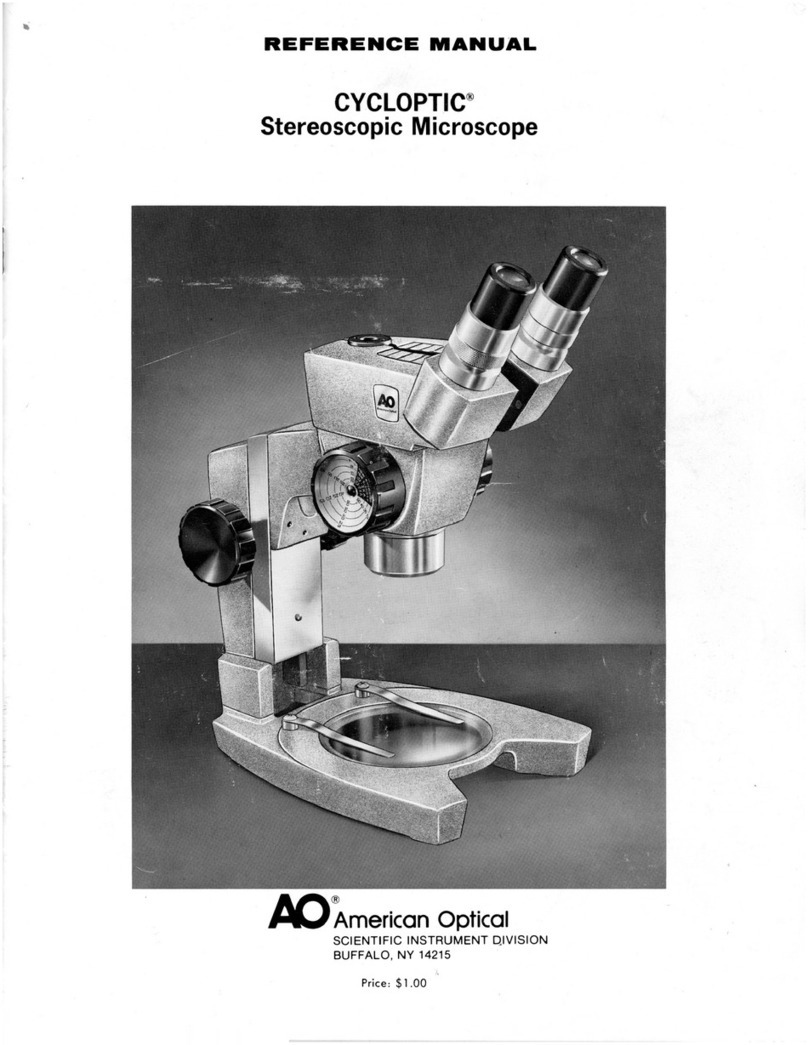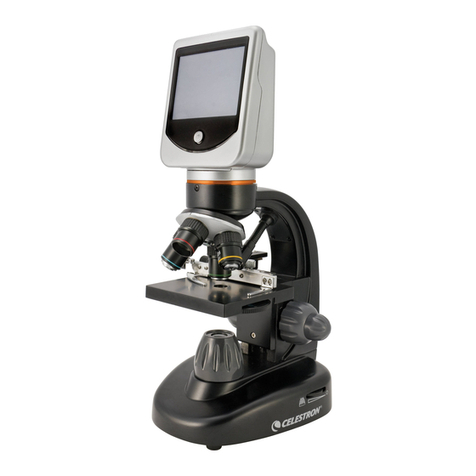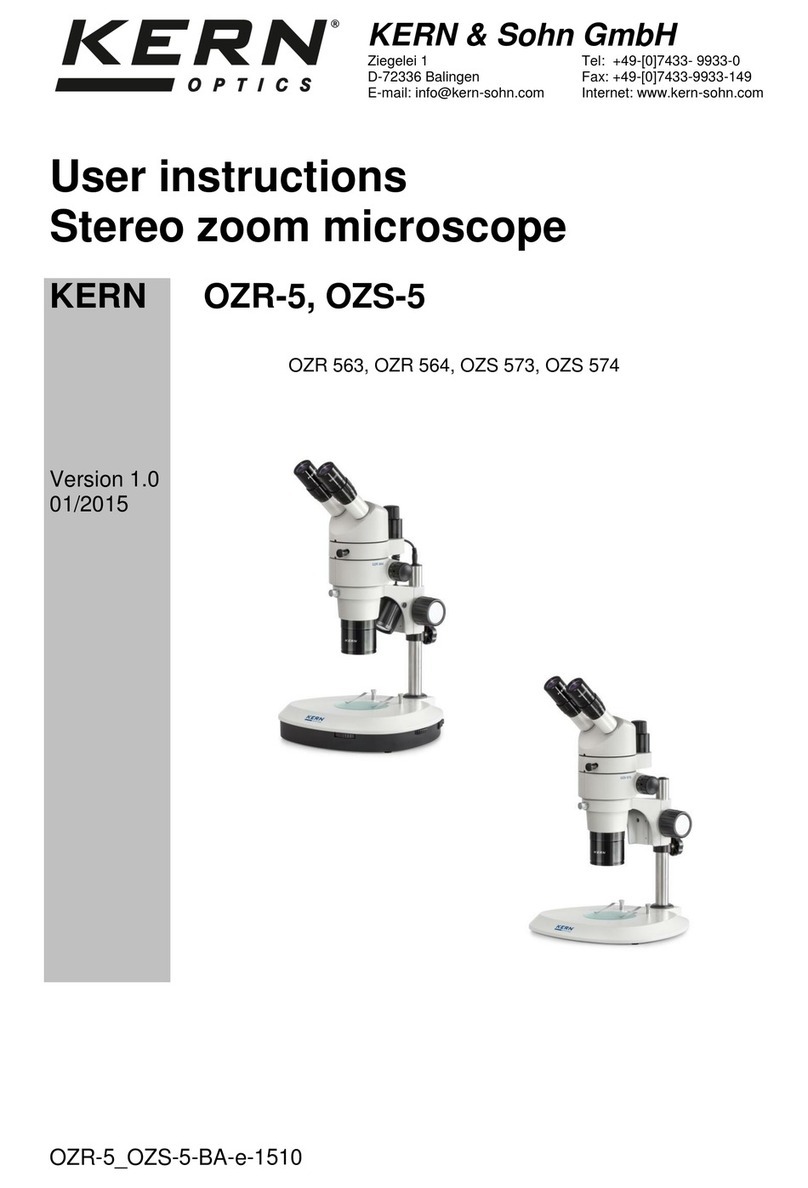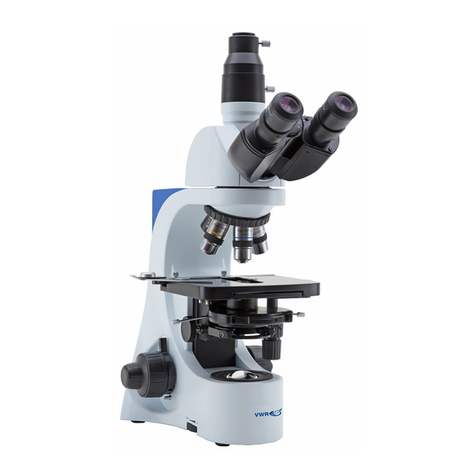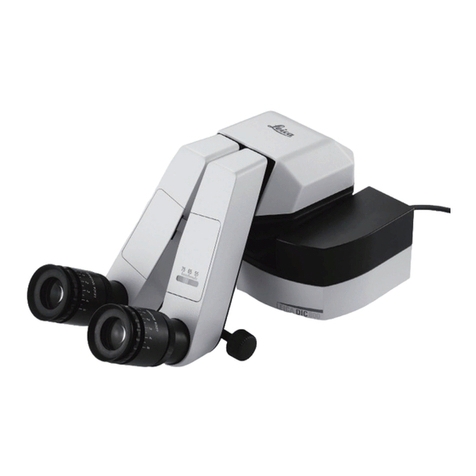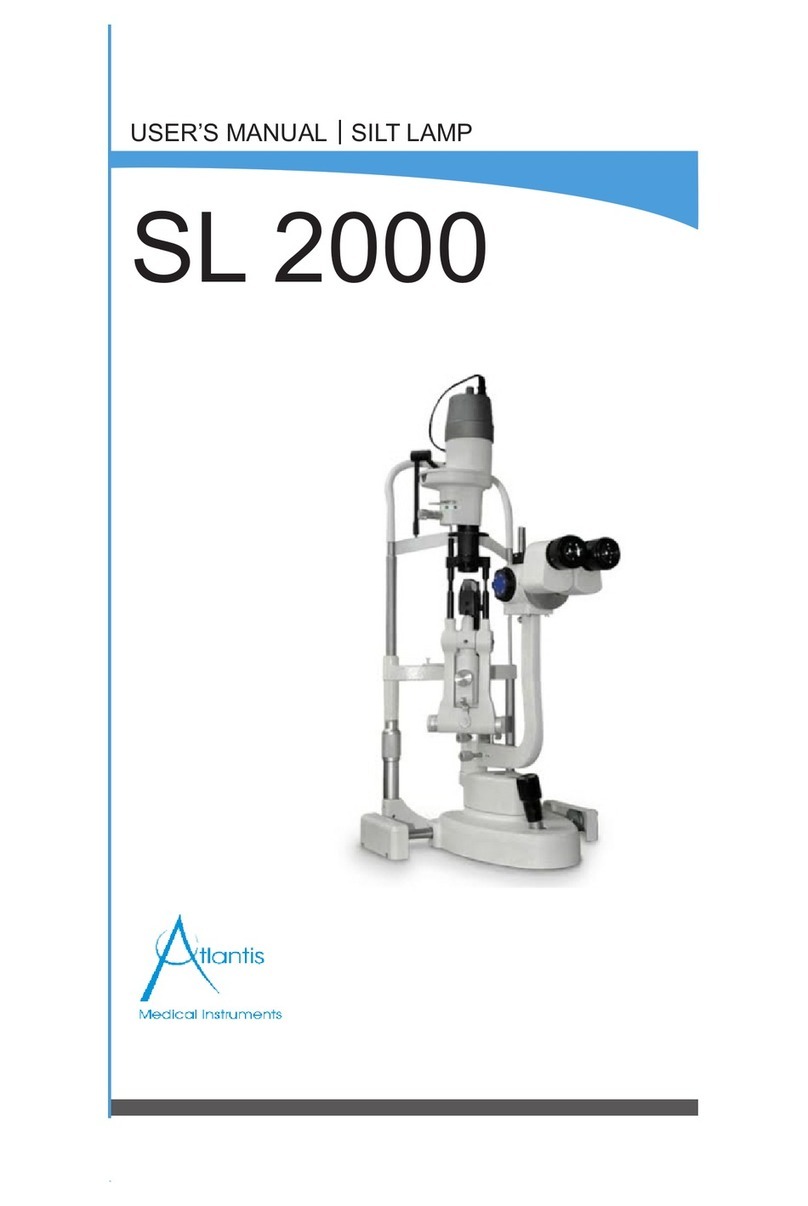
1
BXFM
Introduction
This microscope employs the UIS2 (UIS) optical systems. If you use eyepiece, objective, observation tube or
condenser, etc. together with this microscope, be sure that they apply to the UIS2 (UIS) optical system series.
Using inappropriate units restricts the performance.
(There are units usable with the BX series. Contact Olympus or refer to the latest version of catalogs.)
Configuration of instruction manuals
Read all the instruction manuals provided with the units you purchased.
The following instruction manuals are prepared for the units to be used with this system.
Instruction manuals Main contents
BXFM system microscope
(this instruction manual)
Reflected light brightfield observation, reflected light darkfield
observation, reflected light simple polarization observation, reflected light
differential interference contrast observation, reflected light fluorescence
observation and reflected light infrared observation
Light guide illumination system Connection of the light guide illumination system with the liquid light
guide, etc.
U-RFL-T power supply for mercury
burner /
U-RX-T power supply for xenon burner
Connection of the mercury lamp housing with the power supply
TH4 halogen lamp power supply unit Connection of the halogen lamp housing with the power supply
BX3M-PSLED Power supply for LED Power supply for LED
BX3M-CB/CBFM
Control box/FM Control box
Connection of the cable for motorized nosepiece with the control box
Connection of the cable for MIX slider with the control box
Coded function system
Connection of the cable of coded nosepiece with the control box
Connection of the cable of coded reflected light illuminator with the
control box
Label of the immersion oil
Read the label of the immersion oil you purchased.
Immersion oil Major contents
IMMOIL-8CC
IMMOIL-500CC
IMMOIL-F30CC
Contains the cautions and handling methods of the immersion oil.
Intended use
This product has been designed to observe magnified images of specimens in industrial applications.
Appropriate specimens can include semiconductors, electrical components, molded articles, or mechanical parts.
Industrial applications include observation, inspection or measurements.
Do not use this product for any purpose other than its intended use.


